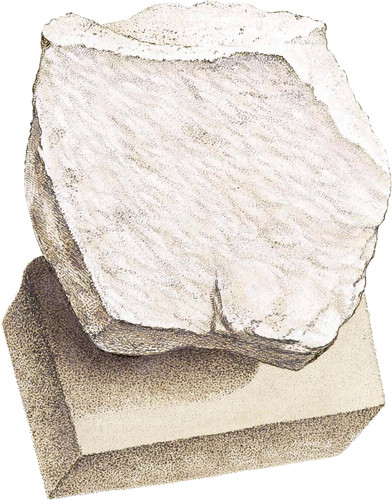 Enlarge
Enlarge
British Mineralogy
- Class 2. Earths.
- Order 1. Homogeneous.
- Gen. 3. Lime.
- Spec. 5. Carbonate.
- Sect. 4. Magnesian.
- Div. 2. Amorphous.
Among the building-stones used by masons is that called Roach Abbey Stone, from Roach Abbey, Yorkshire. This seems peculiarly adapted for building; as it may be chosen of excellent qualify to work, is of a neat small granular structure, (being partly in minute granular crystals and partly chalky,) and is nearly white; and holding a tolerable quantity of Magnesia, the agriculturist will not grudge it to the builder, because it will not make good manure; nor will the lime-burner feel the loss of if, as it will not by burning make good Lime; and in building it does not promise to get stained by vegetation, like some other stones. The Stone figured behind is called by the masons, Burrell, from the place where it is found. It is of a dull colour, nearly the same hardness, and may be so regularly worked, that it is often used by the masons for practice in carving. It is occasionally used for building in the neighbourhood of Cambridge and Newmarket, where it is quarried. It is less brittle, but about as hard as common Chalk; it much resembles the common Fire-stone of the next plate in general appearance, but seldom has Mica or Chlorite, though it contains much Silex.

